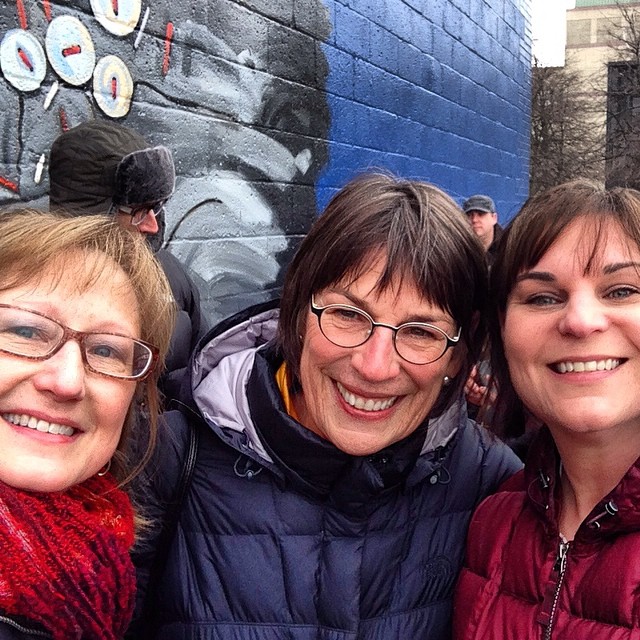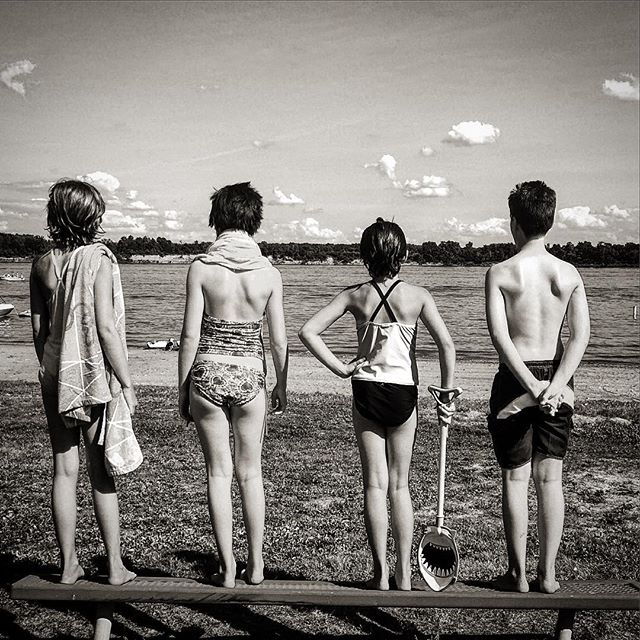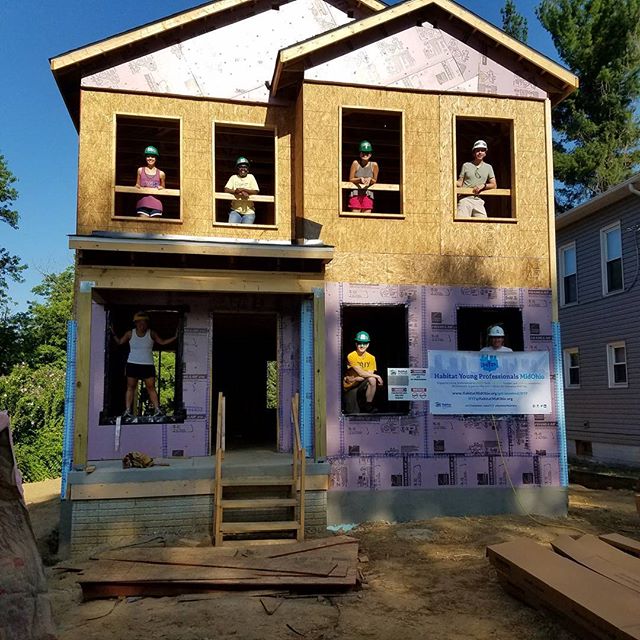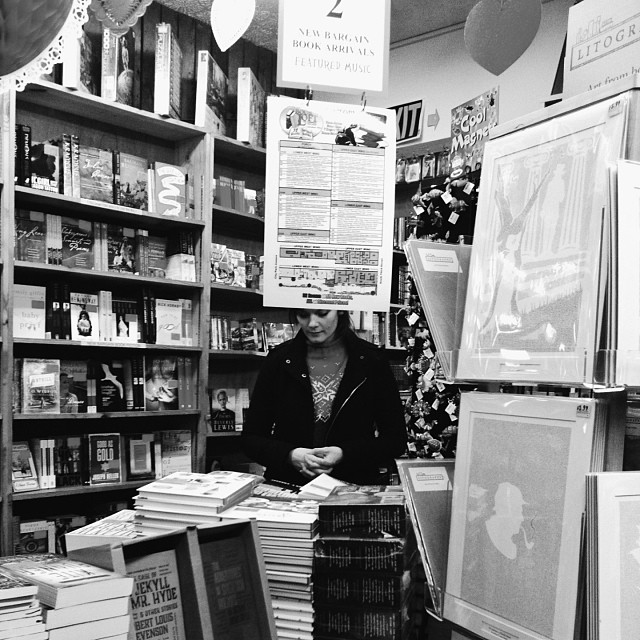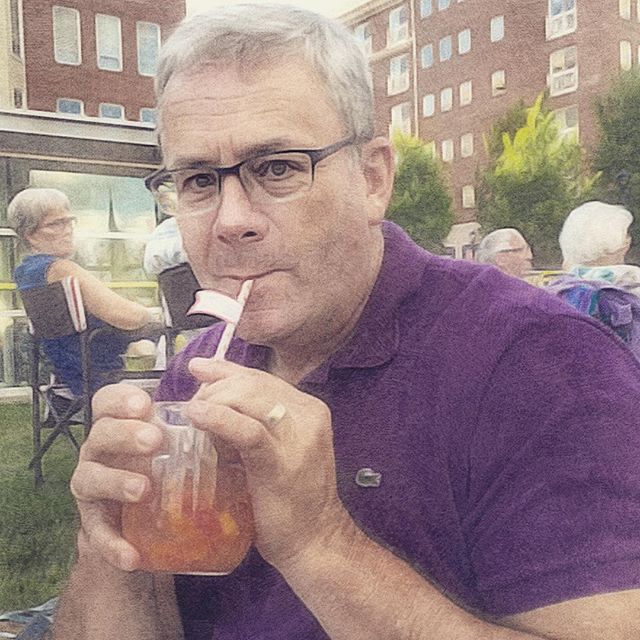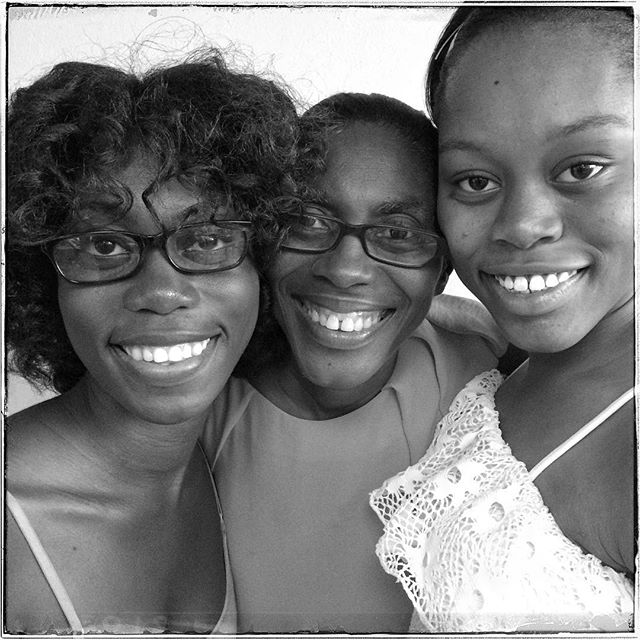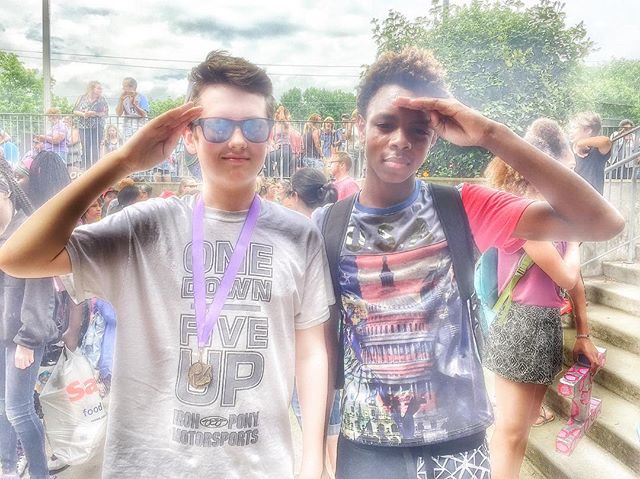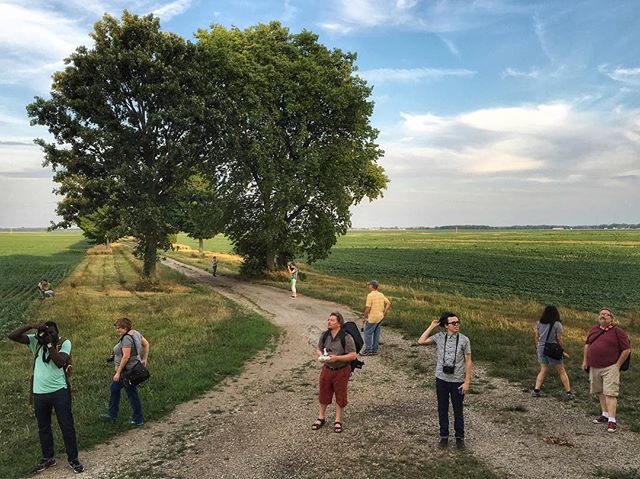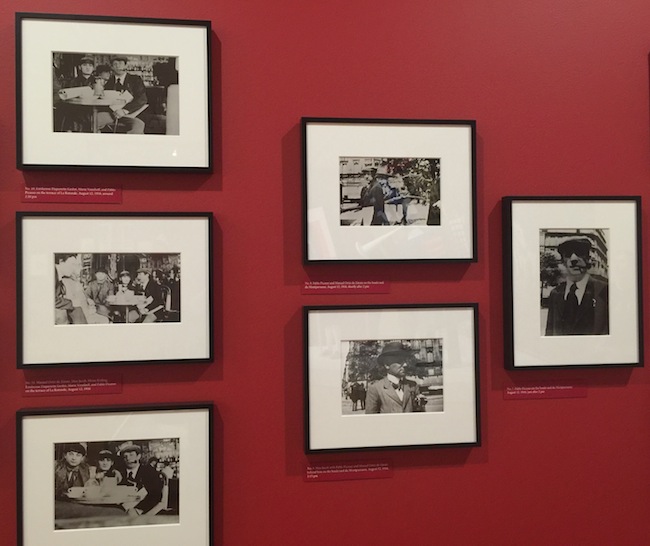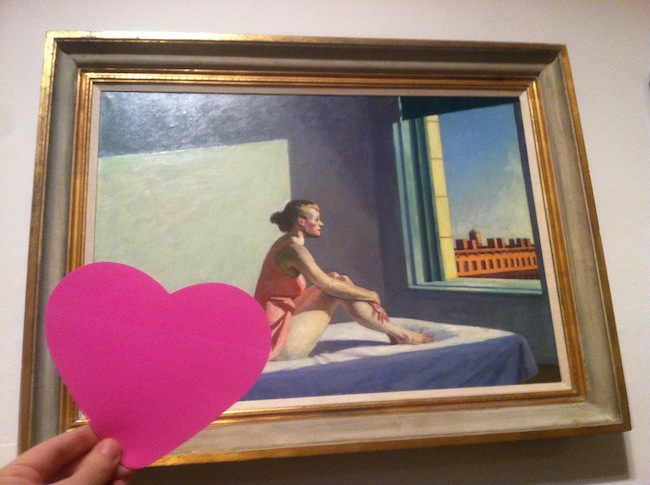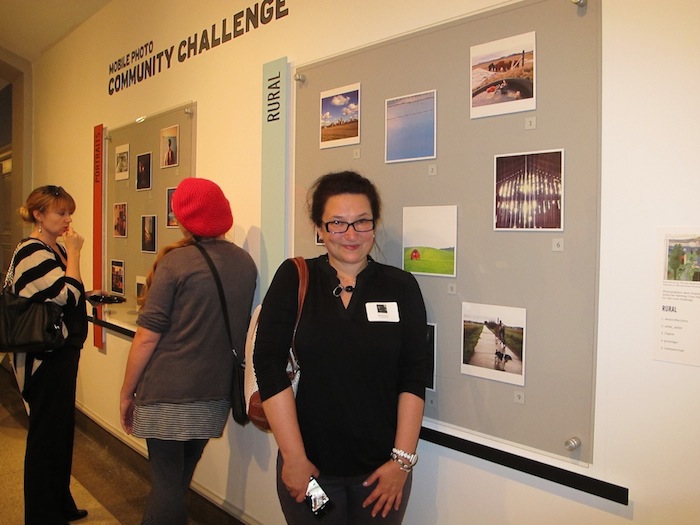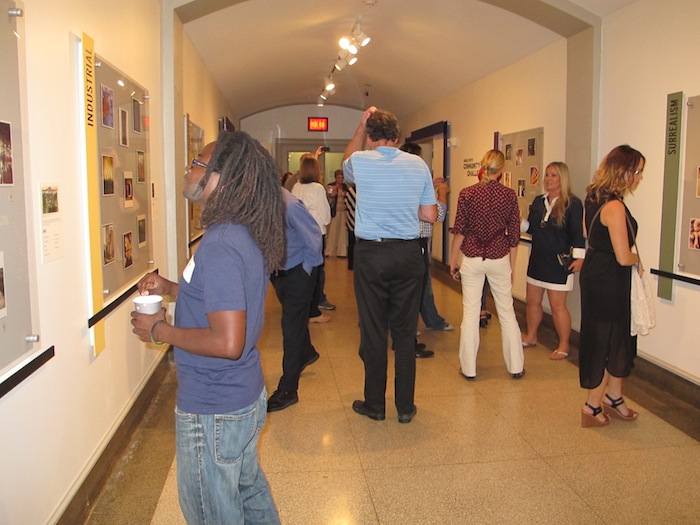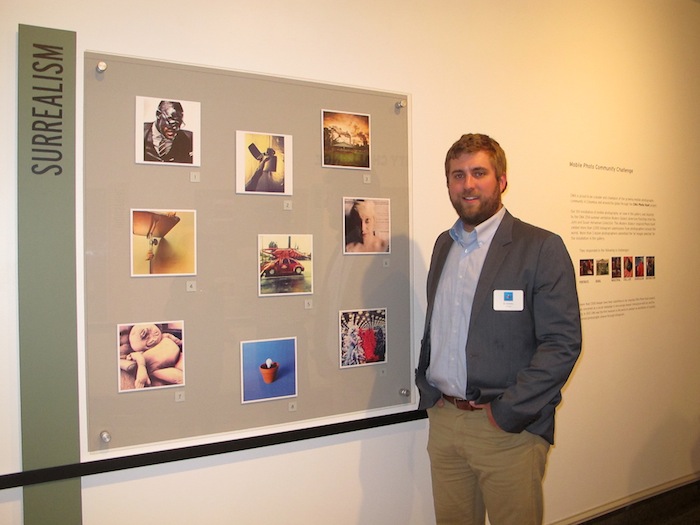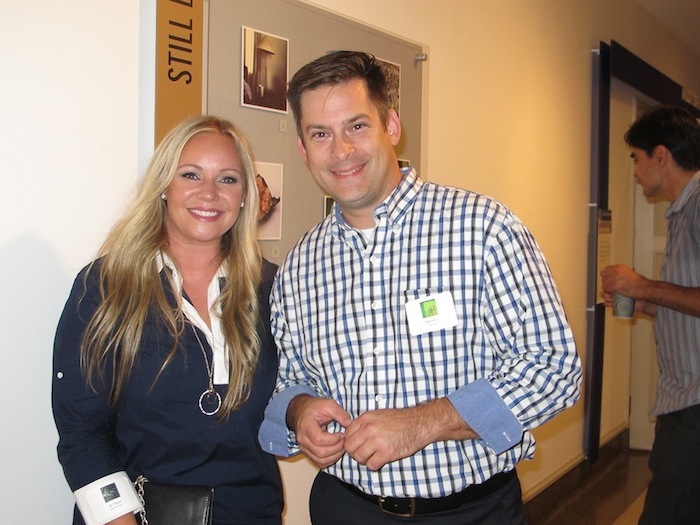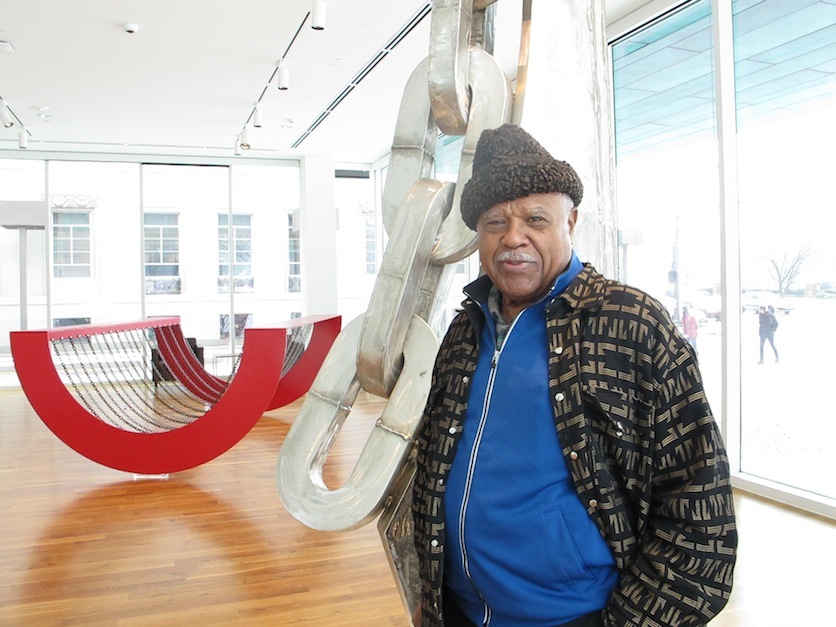
Melvin Edwards at Columbus Museum of Art.
Over the course of five decades African American sculptor Melvin Edwards has produced an impressive body of work primarily in welded steel. As the Melvin Edwards: Five Decades retrospective wraps up its run at Columbus Museum of Art, we go behind the scenes with the renowned sculptor. The following is an excerpt of a conversation with Melvin Edwards and Tyler Cann, Columbus Museum of Art Contemporary Curator.
You spent five years in Dayton, Ohio in the mid 1940s. Tell us about that.
Ohio was very good to me. Years ages 7 to 12 were hard play years in Ohio. I got my first bicycle, my only sled (because there’s no snow in Texas). Dayton was the first place I ever visited an art museum, the Dayton Art Institute. Ohio wasn’t segregated like Texas. Ohio was more open.
Was there a moment when you felt art was a viable way to make a path in life?
I wasn’t ever sure it was viable, but it was what I wanted to do. I thought maybe I would make a living as a commercial artist. At LA City College my drawing teacher was also my commercial art teacher. He told me “Your drawing is very good. If you promise to never take another commercial art class again, I’ll pass you.” I was always trying to do something more creative and dynamic.
Most of your work is welded steel. How did you discover that path?
Toward the end of my studies I saw a group of graduate students welding and I was curious about the process. I took a night class from one of the graduate students and learned to weld… not the aesthetics, just the mechanics of welding.
In 1963 you began a series of works called the Lynch Fragments, for which perhaps you are best known. Tell us about the development of that series.
In the early sixties I was teaching myself welding beyond the fundamentals, and I was trying to find my way with sculpture, and the idea of relief and experiment, because ultimately my work as an artist is very experimental. In that period there was no collective title for the Lynch Fragments. It was just experiment and relief.
I don’t have things planned out in advance. The truth is one day a work developed and at the end of the day I felt like I had something special. That work turned out to be “Some Bright Morning,” the first of the Lynch Fragments. After that piece I worked on several things similar in concept.
In the early sixties the Civil Rights movement was heating up. I used my work to express how I felt and what I thought was important. Lynching was the most dominant negative reality and symbolic notion in American culture. I felt my works needed to be as dynamic as that is negative. So I came up with the Lynch Fragments as a collective title.
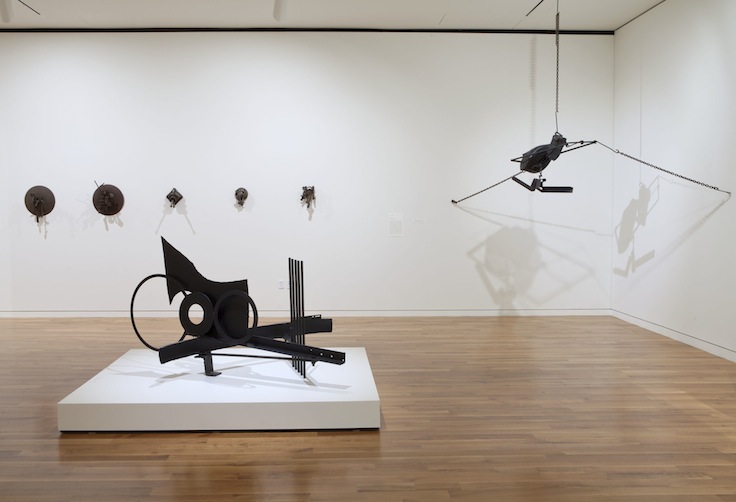
Melvin Edwards is perhaps best known for his series of Lynch Fragments sculptures, some of which are pictured here on the left.
The Lynch Fragments are made up of horseshoes, or spikes or bolts or chains and hung at eye level. You feel a sense of empathy when you are looking at them, and each one is quite distinct. Talk more about the choice of eye level for presentation.
We try to understand the world through our senses, our sense of sight, smell, taste. Every person’s level of understanding is where their head is. It’s a natural level to communicate. Whereas the larger public pieces are more like a public speech.
You came up in New York with a number of African American artists who were working in abstraction… William T. Williams, Frank Bowling, Jack Whitten. How did you position yourself in the art world of the moment in the late sixties, early seventies?
Form my point of view all art is abstract. Artists like Gorky or de Kooning took off from the figure. Pollock threw paint. The artists you mentioned who were more my generation, we already knew about that, and the experiments in space with the Mexican muralists, which influenced Pollock… all those things kind of got moved around in different ways by different people. I was one of the people working out my ways of dealing with it. Early on I felt free to put any kind of forms together, and if it felt right, to let it be.
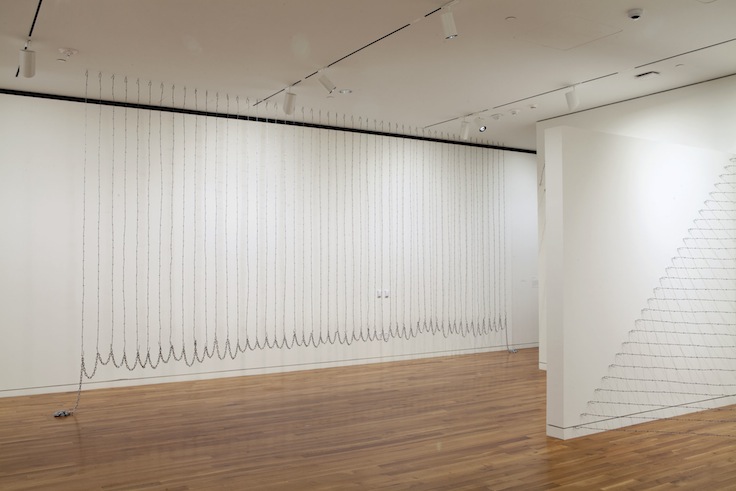
Part of Melvin Edwards’ solo exhibition at the Whitney Museum of American Art has been re-created for the Edwards retrospective at Columbus Museum of Art.
Talk about the 1970 Whitney exhibition, which used barbed wire and chains. You were the first African American to have a solo exhibition at the Whitney.
A curtain is a barrier. Barbed wire has its own political history…. the reservations of Native Americans in the late 1800s; taken to Namibia by the Germans before World War I; and then of course the concentration camps. So those were the implications of the material. In art terms there’s more history than that. Julio González sparked the notion that drawing in space was a concept. Picasso used line in a more dynamic, dramatic way. I was in a sense extending those concepts of drawing in space. But I was using two materials, barbed wire, which is more physically dangerous material, but also visually poetic. And I was using chains, which was a way to work with rigid material to produce beautiful lines.
As an artist I’m transposing the notion of materials and what they mean, or playing with them, because that’s what poets do, that’s what writers do. You could take the same 5,000 words and write 5,000 different novels if you’re truly creative. I’m just trying to take the materials and do different things with them, but at the same time express the things that interest me.
Melvin Edwards: Five Decades is on view at Columbus Museum of Art through May 8, 2016.
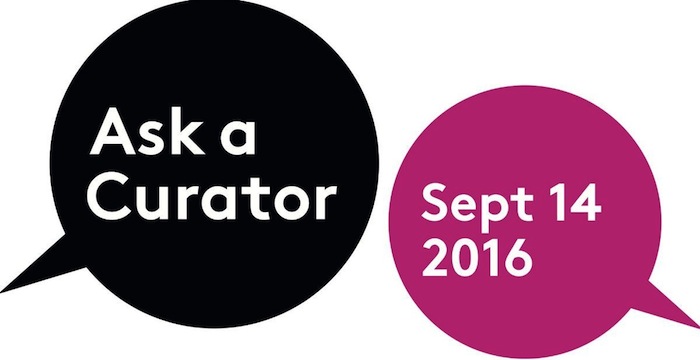
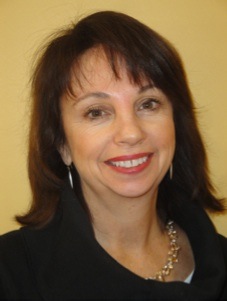 Sarah Rogers, Columbus Museum of Art Executive Deputy Director and Curator for Bodies@Work: The Art of Ruben and Isabel Toledo. Rogers has been in leadership roles at many cultural organizations across Columbus including Columbus Association for the Performing Arts, COSI, as well as, Director of Exhibitions for the Wexner Center for the Arts from 1989 to 2000.
Sarah Rogers, Columbus Museum of Art Executive Deputy Director and Curator for Bodies@Work: The Art of Ruben and Isabel Toledo. Rogers has been in leadership roles at many cultural organizations across Columbus including Columbus Association for the Performing Arts, COSI, as well as, Director of Exhibitions for the Wexner Center for the Arts from 1989 to 2000.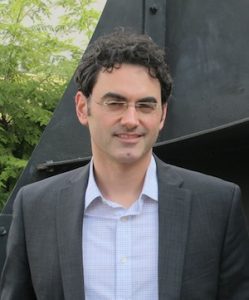 Tyler Cann, Columbus Museum of Art Curator of Contemporary Art. Cann oversaw the reinstall of much of CMA’s contemporary art collection in CMA’s new Walter Wing, and was the curator for the Walter Wing’s opening exhibitions, Keeping Pace: Eva Glimcher and Pace/Columbus, and the Paul Feeley retrospective, as well as, the onsite curator for this year’s Melvin Edwards exhibition, a retrospective of the renowned sculptor’s work.
Tyler Cann, Columbus Museum of Art Curator of Contemporary Art. Cann oversaw the reinstall of much of CMA’s contemporary art collection in CMA’s new Walter Wing, and was the curator for the Walter Wing’s opening exhibitions, Keeping Pace: Eva Glimcher and Pace/Columbus, and the Paul Feeley retrospective, as well as, the onsite curator for this year’s Melvin Edwards exhibition, a retrospective of the renowned sculptor’s work.